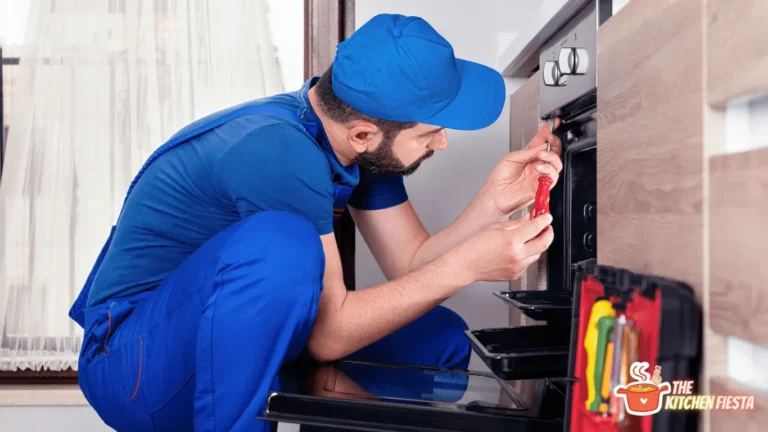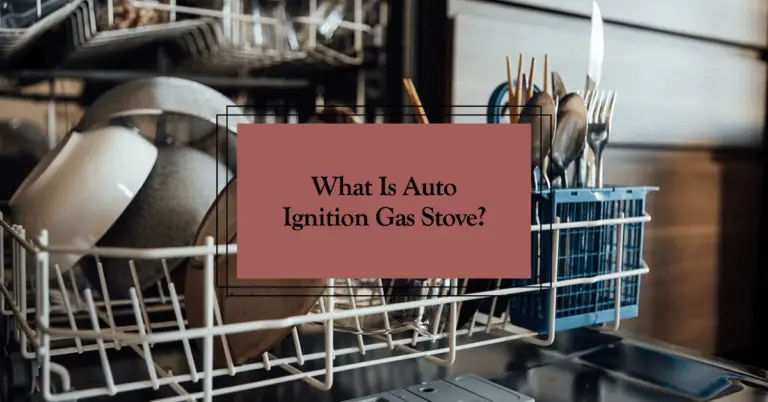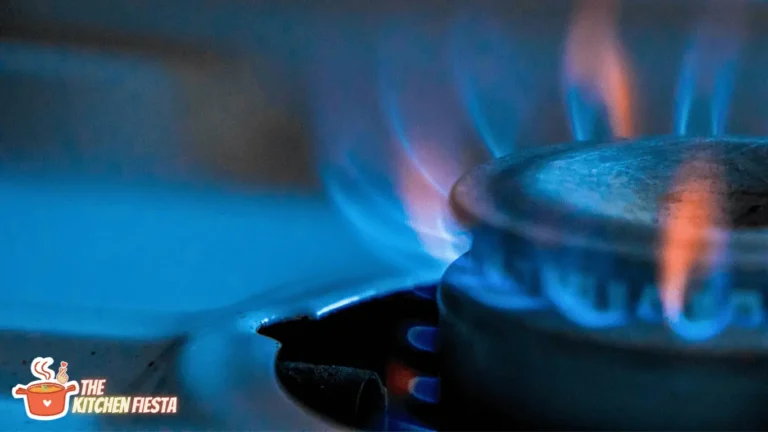Left Gas Stove On Without Flame for 2 Hours: Risks and Safety Precautions

Leaving a gas stove on without a flame can be a dangerous mistake many people make. It can sometimes lead to carbon monoxide poisoning or even a fire. If you accidentally leave your gas stove on without a flame for an extended period, such as two hours, it’s essential to take immediate action.
The first step is to turn off the stove or burner to prevent the problem from continuing. After that, it’s crucial to ventilate the area by opening all the doors and windows. This will help to dissipate any gas that may have accumulated in the room. It’s also a good idea to leave the area temporarily to allow the gas to disperse fully.
This article will guide you through the potential risks and provide expert advice on what to do to ensure your safety and prevent hazardous situations.
Understanding Gas Stoves
Gas stoves are a popular choice for cooking in many households. They use natural gas as a fuel source and provide instant heat, making them convenient and easy to use. However, it is essential to understand the potential dangers of gas stoves, particularly when they are left on without a flame.
Gas stoves work by releasing natural gas into the air, which is then ignited by a flame to produce heat. This heat is used to cook food on the stove. When the flame is turned off, the gas continues to flow, creating a potential hazard.
Also Read:
If the gas is left on without a flame, it can build up in the air and create a dangerous situation. Natural gas is odorless and colorless, making it difficult to detect. This can lead to carbon monoxide poisoning, which can cause headaches, dizziness, nausea, and even death.
To prevent this from happening, it is vital always to turn off the gas stove when it is not in use. This includes turning off the burner and the gas supply valve. Installing a carbon monoxide detector in the kitchen is also recommended to alert you if there is a gas leak.
In addition to safety concerns, gas stoves can also be a source of indoor air pollution. When natural gas is burned, it releases nitrogen dioxide, carbon monoxide, and other pollutants into the air. This can lead to respiratory problems, particularly those with asthma or other respiratory conditions.
To minimize indoor air pollution, using the exhaust fan when cooking on a gas stove is recommended. This can help remove air pollutants and improve indoor air quality.
Potential Risks of Leaving Gas Stove On Without Flame
Leaving a gas stove on without a flame can lead to several potential risks. Here are some of the most significant risks that should be considered:
1. Carbon Monoxide Poisoning
Carbon monoxide poisoning is one of the most severe risks of leaving a gas stove without a flame. When gas stoves are left on without a flame, they produce colorless and odorless carbon monoxide. If left untreated, carbon monoxide poisoning can cause headaches, dizziness, nausea, and even death.
2. Fire Hazard
Leaving a gas stove on without a flame can also be a hazard. If something flammable is placed too close to the stove, it can catch fire. Additionally, the gas stove is left on for an extended period. In that case, it can cause the surrounding area to heat up, increasing the risk of a fire starting.
3. Explosion
An explosion is another potential risk of leaving a gas stove on without a flame. If gas builds up in the area around the stove, it can ignite and cause an explosion. This can be especially dangerous if flammable materials, such as cleaning supplies or paper products, are nearby.
4. Gas Leakage
Leaving a gas stove on without a flame can also lead to gas leakage. If the stove is not turned off properly, gas can continue to leak out of the stove, which can be hazardous. Gas leaks can cause headaches, dizziness, and nausea; in extreme cases, they can lead to explosions or fires.
What Happens in 2 Hours?
Leaving a gas stove on without a flame for two hours can be extremely dangerous. Here are some of the things that can happen during this time:
- Fire Danger: If gas leaks from the stove, it can easily ignite if a spark or flame is in the vicinity. This can lead to a fire quickly spreading throughout the kitchen and even the entire house. It is essential to turn off the stove immediately if you notice any gas smell.
- Carbon Monoxide Poisoning: Carbon monoxide is an odorless and colorless gas produced when a gas stove is left on without a flame. It can cause dizziness, headaches, nausea, and even death. Inhaling this gas for an extended period can lead to serious health issues.
- The buildup of Gas: If the gas stove is left on for a long time without a flame, gas can build up in the kitchen. This can make it more difficult to detect the gas smell and increase the risk of fire or carbon monoxide poisoning.
It is important to note that the severity of these risks can vary depending on factors such as the size of the kitchen, the ventilation, and the type of gas stove. However, it is always better to err on caution and turn off the stove immediately if there is any suspicion of gas leakage.
Symptoms of Gas Leak Exposure
Exposure to gas leaks can cause a variety of physical symptoms. The symptoms can range from mild to severe, depending on the concentration and duration of the exposure. Here are some of the most common symptoms of gas leak exposure:
- Headaches: Gas leaks can cause headaches due to inhaling toxic gases like carbon monoxide.
- Nausea and vomiting: Exposure to gas leaks can cause nausea and vomiting due to the inhalation of toxic gases.
- Dizziness: Gas leaks can cause dizziness due to inhaling toxic gases.
- Fatigue: Exposure to gas leaks can cause fatigue due to inhaling toxic gases.
- Eye irritation: Gas leaks can irritate due to inhaling toxic gases.
- Skin blisters: Exposure to gas leaks can cause skin blisters due to direct contact with the toxic gases.
- Difficulty breathing: Gas leaks can cause difficulty breathing due to inhaling toxic gases.
It is important to note that not all gas leaks are immediately detectable by smell. Some gases, such as carbon monoxide, are odorless and can cause symptoms even when the gas leak is not apparent. Therefore, it is essential to be aware of the symptoms of gas leak exposure and take appropriate action if any symptoms are experienced.
Immediate Actions to Take
If someone has left the gas stove on without a flame for 2 hours, immediate actions must be taken to ensure safety.
Firstly, turn off all knobs on the stove immediately. Avoid creating sparks or flames, and do not turn on any lights. If there is a pilot light, do not attempt to relight it.
Next, evacuate everyone from the house, including pets. Open all doors and windows to ventilate the area. If possible, turn off the gas supply at the source. If the gas shut-off valve is not easily accessible, contact the gas company to shut off the gas supply.
It is important to note that leaving a gas stove on without a flame can lead to carbon monoxide accumulation. This colorless and odorless gas can be deadly. Therefore, if anyone is experiencing symptoms such as headache, dizziness, nausea, or confusion, seek medical attention immediately.
In addition, it is recommended to have a carbon monoxide detector installed in the home to alert occupants of any dangerous gas levels.
Overall, it is crucial to take immediate action to ensure the safety of everyone in the household when a gas stove has been left on without a flame for an extended period.
Also Read: Left My Gas Oven For Three Hours.
Prevention Measures
It is crucial to take preventive measures to avoid the dangers of leaving a gas stove on without a flame. Here are some tips to ensure that you don’t leave your gas stove on for an extended period without a flame:
- Always double-check that the stove is off before leaving the kitchen.
- Keep flammable objects such as dish towels, paper towels, and oven mitts away from the stove.
- Regularly check your stove’s gas line and connections for leaks or damages.
- Install a combustible gas leak and carbon monoxide detector in your kitchen.
- Train everyone in your household on gas stove safety and what to do in an emergency.
Following these prevention measures can significantly reduce the risk of leaving your gas stove on without a flame. Remember, gas stoves can be dangerous, and take the necessary precautions to ensure your safety. That of your loved ones is essential.
Gas Leak Detection Devices
Gas leak detection devices are essential to ensure the safety of households using gas appliances. These devices are designed to detect the presence of combustible gases, such as natural gas and propane, in the air. They can alert homeowners to gas leaks and prevent fire and explosion hazards.
Two gas leak detection devices are gas leak and carbon monoxide detectors. Gas leak detectors are designed to detect the presence of combustible gases in the air. In contrast, carbon monoxide detectors are designed to detect the presence of carbon monoxide. Gas appliances can produce this toxic gas.
When choosing a gas leak detection device, it is essential to look for one approved by UL or CSA, which are independent organizations that test and certify products for safety. It is also essential to choose a device that is easy to install and use and has a reliable alarm system that can alert homeowners to gas leaks.
Gas leak detection devices come in various types, including plug-in detectors, battery-operated detectors, and hardwired detectors. Some detectors can also be connected to a home security system for protection.
Gas leak detection devices are essential for households that use gas appliances. They can help prevent potential fire and explosion hazards and provide peace of mind for homeowners.
Professional Assistance
If you have left your gas stove on without a flame for an extended period, it is essential to seek professional assistance. Gas leaks can be hazardous and can cause serious harm to you and your family. Here are some steps you can take to get professional assistance:
1. Call your gas company or the fire department: If you smell or suspect a gas leak, it is essential to call your gas company or the fire department immediately. They can send a professional to your home to assess the situation and determine the best action.
2. Evacuate your home: If you suspect a gas leak, it is essential to evacuate your home immediately. Ensure everyone in your household, including pets, is safe outside and away from home. Do not turn on any lights or appliances, and do not smoke.
3. Wait for a professional to arrive: Once you have called for professional assistance, waiting for a professional to arrive is essential. Refrain from attempting to fix the problem yourself, as this can be incredibly dangerous.
4. Follow the professional’s instructions: Once a professional arrives, they will assess the situation and provide you with instructions on what to do next. It is essential to follow their instructions carefully to ensure your safety and the safety of your home.
Remember, gas leaks can be hazardous and should be taken seriously. If you suspect a gas leak, it is essential to seek professional assistance immediately.
Conclusion
In conclusion, leaving a gas stove on without a flame for an extended period poses a severe risk, potentially endangering lives. Immediate action is vital if this situation is detected. First, turn off the gas at its source by accessing the shut-off valve or contacting the gas company for assistance. Then, open doors and windows to promote ventilation and minimize the inhalation of gas or carbon monoxide, which can lead to poisoning and health complications. Avoid switching on any lights or the stove itself to prevent explosions.
Always turn off the gas stove after cooking, as leaving it unattended, even briefly, is never safe. Prioritize safety above all and seek professional help if uncertain. Take necessary precautions to ensure the well-being of all involved.
Frequently Asked Questions
What are the dangers of leaving a gas stove on without a flame?
Leaving a gas stove on without a flame can be extremely dangerous. If a spark or flame is introduced, it can cause a gas buildup in the room, leading to an explosion. Inhaling gas can also cause health problems, including headaches, nausea, and dizziness.
How long does it take for gas to dissipate after leaving a gas stove on?
Gas can take a few minutes to several hours for gas to dissipate after leaving a gas stove on without a flame. The amount of time it takes depends on factors such as the size of the room, the amount of gas released, and the ventilation in the room.
What should I do if I accidentally left my gas stove on without a flame?
If you accidentally left your gas stove on without a flame, you should first turn off the gas at the source. Then, open all the windows and doors to ventilate the room. Avoid turning on any lights or creating a flame of any kind. If you smell gas, evacuate the area and call 911 immediately.
Can you smell gas from a stove if it’s left on without a flame?
Yes, you can smell gas from a stove if it’s left on without a flame. The smell of gas is often described as the smell of rotten eggs. If you smell gas, you must take immediate action to avoid a potential explosion or health problems.
What are the signs of a gas leak from a stove?
Signs of a gas leak from a stove include the smell of gas, hissing or whistling sounds near the stove, and a pilot light that keeps going out. You may also notice physical symptoms such as headaches, nausea, and dizziness.
How long should I air out my house after leaving a gas burner on without a flame?
It’s recommended that you air out your house for at least 30 minutes after leaving a gas burner on without a flame. This will help to dissipate any gas that may have built up in the room. If you still smell gas after airing out the room, evacuate the area and call 911 immediately.






